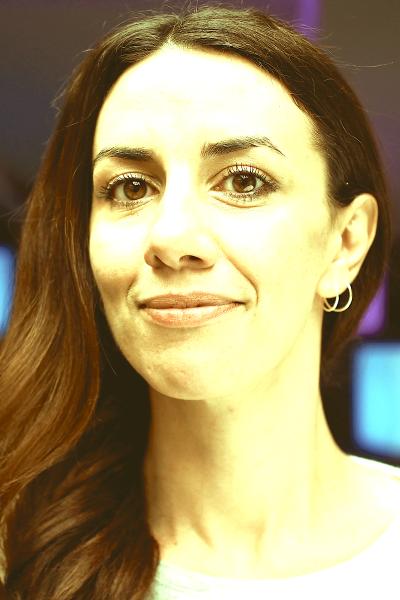At the beginning of the spring semester, I asked the course coordinator for Digital Implementations in Cultural Heritage, Anna Foka, a few questions about her course.
What is your research background and how did you find Digital Humanities as an educational and research subject?
A: I am an Associate Professor (Reader) in information technology and the humanities, with a background in classics, history and archaeology as well as heritage and media studies. I have extensive experience of teaching digital humanities courses (Umeå, Gothenburg, Linnaeus, Zadar. and even participating in pedagogical research together with colleagues from Kings College in London and Stanford) since 2011 so this was not a first time. Obviously, I find the intersection of humanities and technology fun to teach. That said, I felt that students were not introduced to many hands-on courses before mine, and it was rather challenging to get them in a lab environment for the first time, but I *hope* it turned out well!
How do you use digital tools or digital methods in your own research?
A: In too many diverse ways! Well… GIS methods and tools but also visualization tools. But of course also digital encoding and metadata science are key in what I do in terms of research.
I am currently leading and/or involved in the following research projects: I am the PI of Periegesis (Funded by the Marcus and Amalia Wallenberg Research Foundation 2018-21). What we do is we ascribe metadata to character strings using a platform for spatial analysis. I was a core member of the project Ancient Itineraries: The Digital Lives of Art History (Funded by the Getty Foundation 2018-9),I am currently leading and/or involved in the following research projects: I am the PI of Periegesis (Funded by the Marcus and Amalia Wallenberg Research Foundation 2018-21). What we do is for this project is to ascribe spatial and heritage information to words. The platform we work with is called recogito, and is developed by Rainer Simon, Professor of IT in the Austrian Academy of Sciences. In so doing, we feed back into the platform. I am further a core member of the project Ancient Itineraries: The Digital Lives of Art History (Funded by the Getty Foundation 2018-9).
For this international project, we run two institutes together with the Department of Digital Humanities in Kings College London, one in London and one at the Swedish Institute in Athens, in order to create language vocabularies (gazetteers) for art history artefacts on the move. Kings College Digital Humanities lab is building this platform as we speak, together with core members and institute participants. We are reporting back to the Getty Foundation on artefact ontologies that have a meaning in the digital age, with equality and diversity in mind but also tackling the complex issue of digital surrogates or looted antiquities. More anon! I
What was for you the most successful or meaningful part of the course?
A: I think when we studied GIS and spatial analysis. The students to expand their knowledge with Daniel Löwenborg’s ´s next elective in the autumn: Introduction to GIS. I’d like to believe it was certainly fun for them to learn how to make 3D objects from pictures! I think they’ve enjoyed that! Their final presentations made me happy and overwhelmed. They were smart, professional and very much hands on! I am hoping some of them will publish versions of their excellent essays on this blog and our DH Uppsala blog
What is the central theoretical viewpoint or practical method that you want the students to take away from your course into their coming courses in the program?
A: My course was about implementing technology for history, art, heritage and the museum sector more generally. I want my students to engage hands on with technology but also think critically. Too much theory makes humanities. DH instead is about the application of methods and tools to real problem solving. I am hoping that these skills will enhance pupils employability and that they’ve learned a thing or two about how to use tech to organize, visualize and to sensory-render the past.
To read more about the course, you can read the post about the workshop the students attended at Uppsala Museum of Evolution

